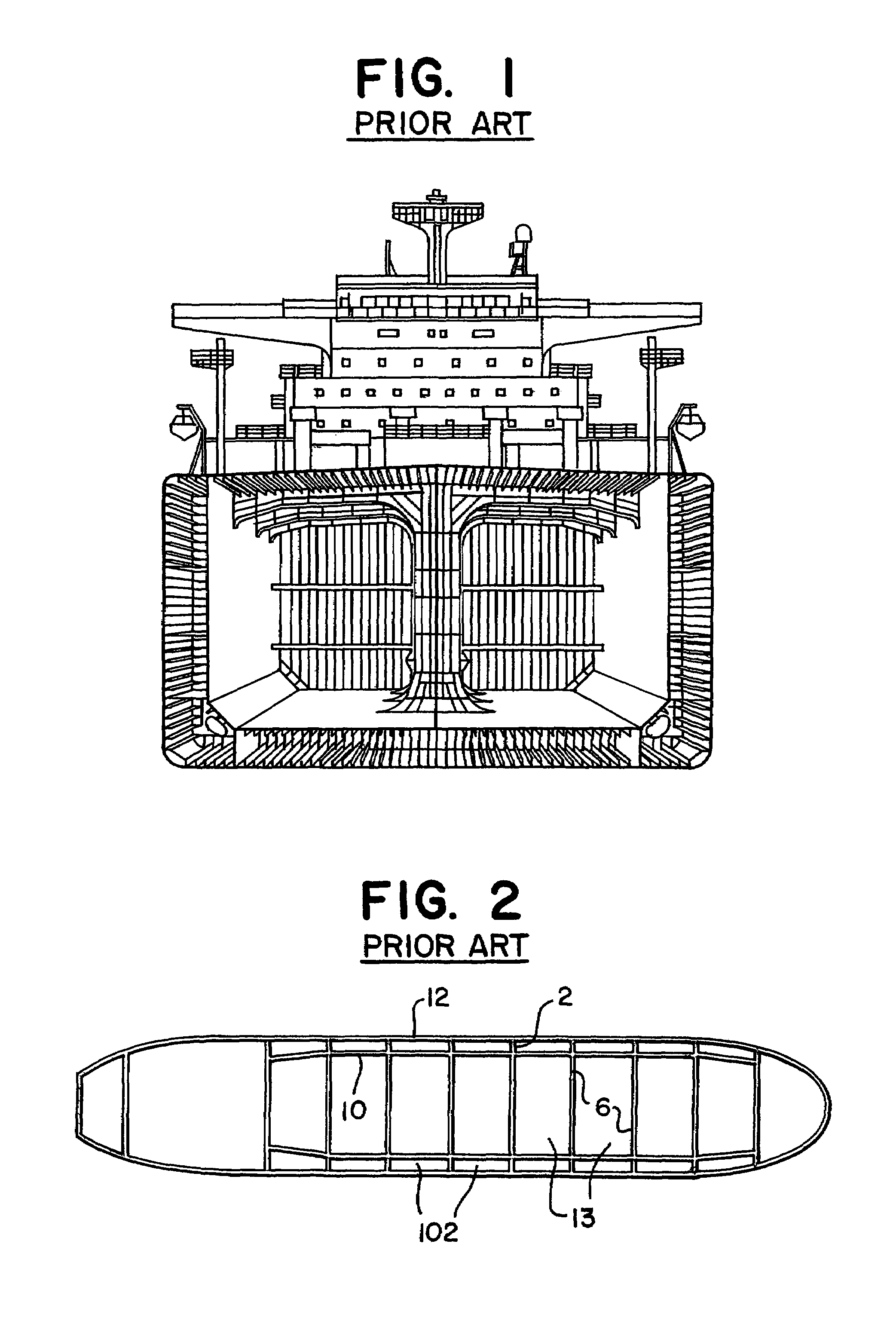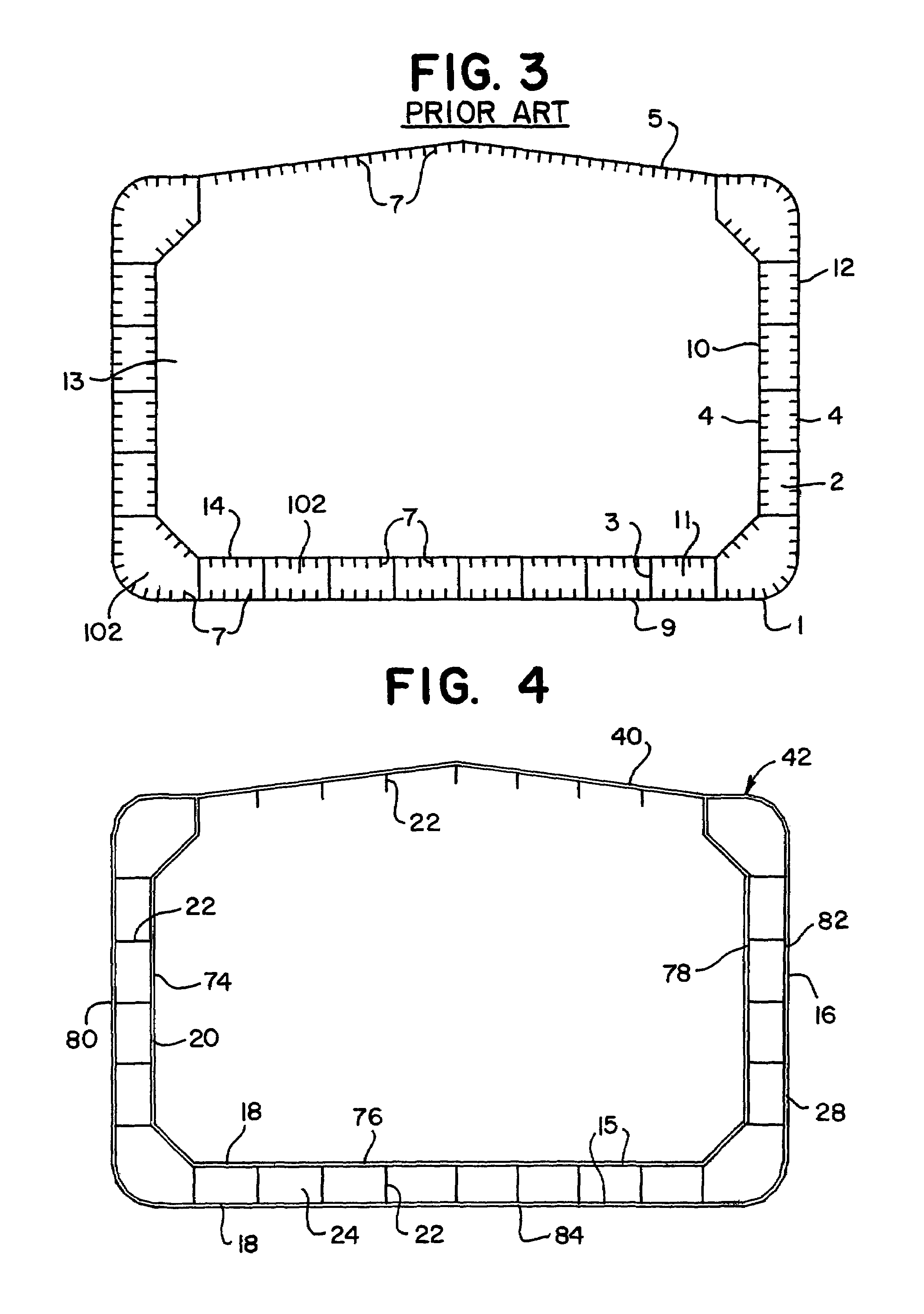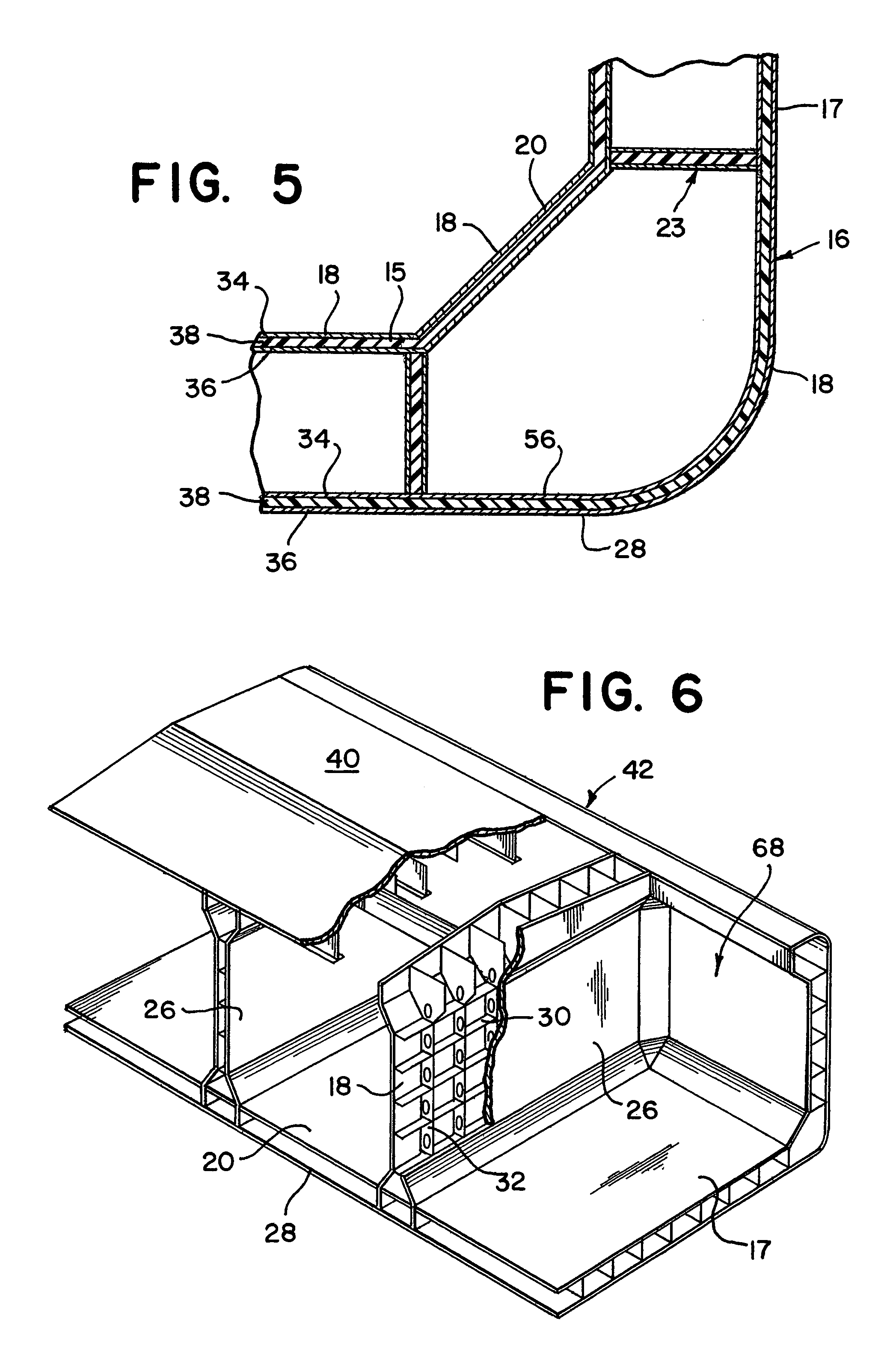Composite steel structural plastic sandwich plate systems
a composite steel and structural plastic technology, applied in the direction of load accommodation, special-purpose vessels, vessel construction, etc., can solve the problems of increasing the number of framing and supporting elements, reducing the number not eliminating the risk of oil spills. , to achieve the effect of reducing the number of ductility, and reducing the number of framing and supporting elements
- Summary
- Abstract
- Description
- Claims
- Application Information
AI Technical Summary
Benefits of technology
Problems solved by technology
Method used
Image
Examples
Embodiment Construction
[0038]The teachings of the present invention are applicable to any structure, vessel, tanker, bulk carrier or ship in which it is desired to contain the contents during an extreme or accidental load event or where it is desirable to enhance fatigue life, improve thermal insulation, improve acoustical insulation, improve dampening characteristics to control vibrations or to connect similar or dissimilar metals without welding.
[0039]The connection of dissimilar metals is especially relevant in storage tanks where vegetable oils, palm oils or other edible oils must be stored without contamination or where corrosive materials must be stored. Generally, metal liners like stainless steel are used as these liners. These speciality metals tend to be substantially more expensive than the support structure. Connecting or welding dissimilar metals involves complicated and costly procedures like explosion bonding, which may not be applicable to or suitable for joining thin plates. Additionally,...
PUM
| Property | Measurement | Unit |
|---|---|---|
| thickness | aaaaa | aaaaa |
| tensile strength | aaaaa | aaaaa |
| elongation | aaaaa | aaaaa |
Abstract
Description
Claims
Application Information
 Login to View More
Login to View More - R&D
- Intellectual Property
- Life Sciences
- Materials
- Tech Scout
- Unparalleled Data Quality
- Higher Quality Content
- 60% Fewer Hallucinations
Browse by: Latest US Patents, China's latest patents, Technical Efficacy Thesaurus, Application Domain, Technology Topic, Popular Technical Reports.
© 2025 PatSnap. All rights reserved.Legal|Privacy policy|Modern Slavery Act Transparency Statement|Sitemap|About US| Contact US: help@patsnap.com



